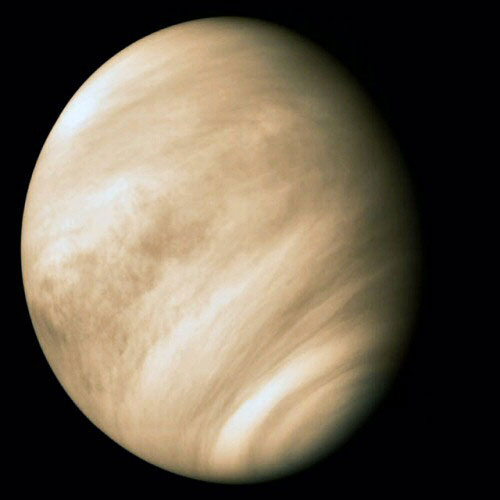New discovery of geological life on Venus
A study published in the April 9 issue of Science reveals that for the first time scientists have discovered clear signs of recent lava flows on Venus's surface. .
Observations show that volcanoes on Venus seem to erupt from a few hundred years to 2.5 million years ago.
This suggests that the planet may still have geological life and that Venus has become one of the few solar system planets that still have geological activity over the past 3 million years.
The above scientific evidence was obtained from a probe ship of Venus by the European Space Agency (ESA) launched into orbit around the planet since April 2006.

Scientists have found differences in composition when comparing the surrounding surface of three volcanic areas. The relatively new lava flows are determined through their emission of radiation. These observations suggest that Venus may still be capable of volcanic eruptions.
Sue Smrekar, a scientist at the Jet Propulsion Laboratory of the US Aeronautics and Space Center, said: "Venus's geological history has been a mystery for a long time. Show us some traces of volcanic activity, but we don't know how long it happened. Now we have strong evidence at the surface of the recent eruptions. "
Scientists found something that flattened Venus's surface, because the planet has only about 1,000 craters, a relatively small number compared to other planets in the solar system.
Scientists think this may be due to the result of volcanic activity re-covering the entire planet with lava flows.
Scientists have called Venus the Earth's sister planet because of the similarities in size, mass, and density, and they deduced that both planets share a common origin. formed at the same time about 4.5 billion years ago.
Venus is also the planet on which greenhouse effects are detected. Venus is covered by a much less friendly atmosphere than the Earth's atmosphere.
It consists primarily of carbon dioxide substances that can produce surface temperatures hot enough to melt lead and surface pressures greater than 90 times that of the Earth's surface pressure.
- Science explains why Venus has so few volcanoes
- Ozone in Venus's atmosphere
- Overview of Venus
- Century astronomical banquet: Venus passes through the Sun.
- Discovering scorpions living on Venus?
- Life may start on Venus
- Venus can stay?
- NASA wants to bring people to Venus
- Why does life appear on Earth instead of Venus?
- Venus Experss are about to plunge into the Venusian atmosphere
- Is there life on Venus?
- Venus is about to be a
 Van Allen's belt and evidence that the Apollo 11 mission to the Moon was myth
Van Allen's belt and evidence that the Apollo 11 mission to the Moon was myth The levels of civilization in the universe (Kardashev scale)
The levels of civilization in the universe (Kardashev scale) Today Mars, the sun and the Earth are aligned
Today Mars, the sun and the Earth are aligned The Amazon owner announced a secret plan to build a space base for thousands of people
The Amazon owner announced a secret plan to build a space base for thousands of people